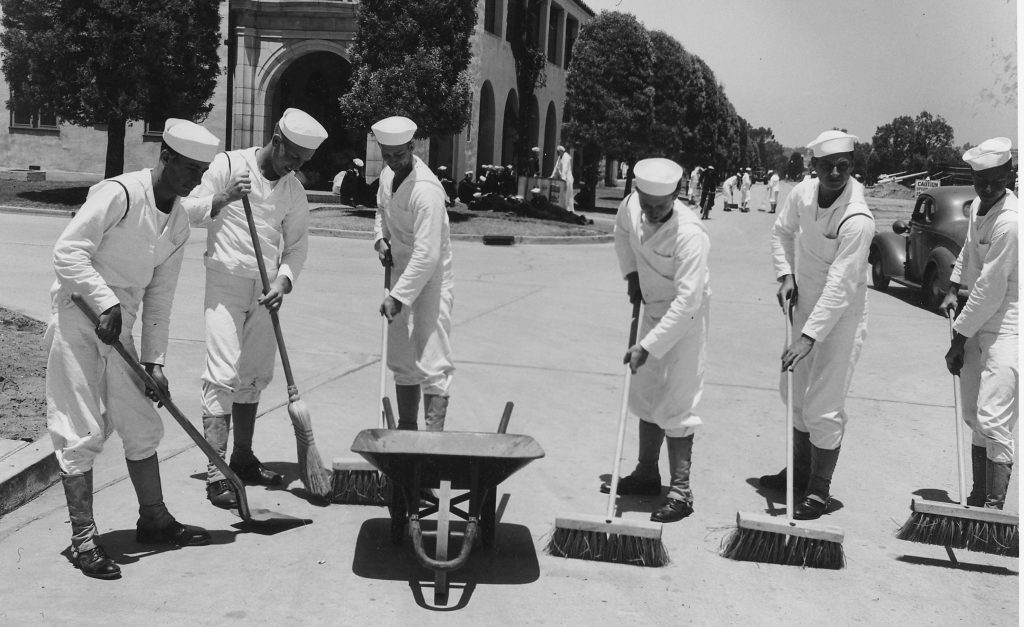Get Tech Tips
Subscribe to free tech tips.
Sweeping with Nitrogen

Two days prior to this article being published, I sent one out about the popular fallacy that nitrogen “absorbs” moisture. That tech tip went out at 7 PM eastern time like usual, and I was sitting on the couch watching something on the Food Network (as usual).
At 7:10 PM, I get a call on my cell, and I look down to see the name Jim Bergmann displayed boldly on my screen. Whenever this happens, it means only one thing—Jim read my tech tip, and he has something to say about it.
I mumble sarcastically into my iPhone:
“What did I say wrong THIS TIME??”
It turns out that it wasn't what I said. Rather, it was what I had forgotten to say that caused Jim to speed read, then speed dial.
So, this tech tip is really Jim's, even though my hands are the ones typing the words. He had a really good point to make about sweeping nitrogen BEFORE pressurizing with nitrogen.
Air is mostly made up of nitrogen, oxygen, argon, and water vapor. The nitrogen and argon are inert. So, while we don't want much of them inside a refrigeration system, they don't react with the oil, refrigerant, and metals in the system as oxygen and water vapor can (and often do).
When we call nitrogen “dry nitrogen,” we just mean that it is nitrogen vapor alone with no water vapor or oxygen mixed with it. When we flow nitrogen at 2-5 SCFH during brazing, we displace the air or “atmosphere” with nitrogen that contains no oxygen or water vapor that causes the nasty flakes of carbon to build up.
Before we start flowing at low levels, we should first purge or “sweep” the system with nitrogen so that all the air is displaced out in the first place. This step should be done at a reasonably low pressure of 3-5 PSIG to help ensure that we don't condense the moisture in the system into liquid water.
Let's take a quick pause there. You may ask:
Why on earth would pressurizing the system with nitrogen lead to liquid water condensation?

This occurs for the same reason that water condenses inside an air compressor—when you squeeze together those water vapor molecules with pressure, the dew point temperature increases… until, finally, it condenses into liquid water inside the system.
By sweeping the system with low-pressure nitrogen for 30 seconds or so, you help displace and carry out that air and its water vapor with it before it has a chance to condense. Then, you flow nitrogen while brazing. Finally, you are ready to pressure test.
What if you did no brazing?
In cases where you opened a system and only made repairs to threaded fittings, used a low-temperature solder that doesn't require flowing, installed a ductless or VRF system that has no brazed connections, or used Zoomlock…
You would still want to do the nitrogen sweep BEFORE the pressure test. That will help decrease your evacuation time and keep your pump oil cleaner longer.
So, there you have it… from Jim's mind to my ears, to this article, to your brain. Pretty good stuff.
—Bryan











Comments
And that is why Triple Evacuation can be useful to speed up evacuation on certain systems if done properly. Your not just wanting to break the vacuum with nitrogen you want to actually sweep the system each time. Most people don’t understand that. They just come back with Nitrogen doesn’t absorb moisture what’s the point. It doesn’t but it can help push any moisture vapor out of the system without adding any more moisture. And on Very Large Systems like VRF it does make a difference and its why Manufactures Recommend it. But I see so many people just opening the nitrogen tank and adding nitrogen to zero and putting there pump back on… Sweep Sweep Sweep
And that is why Triple Evacuation can be useful to speed up evacuation on certain systems if done properly. Your not just wanting to break the vacuum with nitrogen you want to actually sweep the system each time. Most people don’t understand that. They just come back with Nitrogen doesn’t absorb moisture what’s the point. It doesn’t but it can help push any moisture vapor out of the system without adding any more moisture. And on Very Large Systems like VRF it does make a difference and its why Manufactures Recommend it. But I see so many people just opening the nitrogen tank and adding nitrogen to zero and putting there pump back on… Sweep Sweep Sweep
I was under impression of sweeping with nitrogen at a higher pressure push the oil out of low lying areas of the system and then lower to 3 to lbs and braze. ????
I was under impression of sweeping with nitrogen at a higher pressure push the oil out of low lying areas of the system and then lower to 3 to lbs and braze. ????
To leave a comment, you need to log in.
Log In